A dental expert breaks down what could be causing that bump on the roof of your mouth and when it's time to seek medical care.

Bumps on the Roof of Your Mouth: Causes, Treatments, & When to Seek Help

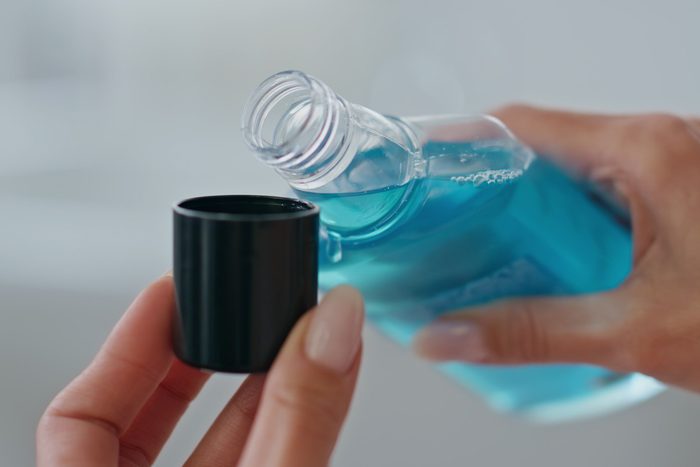
1. Abscess
If you notice a painful bump on the roof of your mouth, it could be an abscess—an infection that forms when bacteria invade the soft tissues. According to Dr. Ross, abscesses often develop due to periodontal disease, a fractured tooth, or a dying nerve within the tooth. Left untreated, the infection can spread, leading to more serious complications.
Symptoms:
- Swelling and redness around the affected area
- Pain or tenderness
- Pus drainage or a persistent foul taste
Treatment:
Depending on the cause, treatment can include deep cleaning procedures, such as nonsurgical or surgical periodontal therapy, often paired with antibiotics and an antibacterial mouth rinse. In more advanced cases, a root canal or tooth extraction may be necessary to fully eliminate the infection.
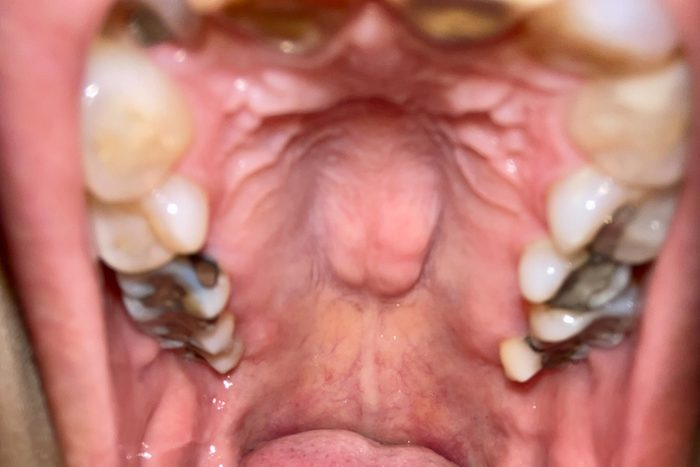
2. Torus Palatinus
Dr. Ross explains that another possible reason for a bump on the roof of your mouth is torus palatinus, a harmless bony growth that gradually develops over time. The exact cause isn’t fully understood, but it’s believed to be influenced by genetic and environmental factors.
Symptoms:
- A firm, immovable lump on the roof of the mouth
- Gradual growth over time
- Typically painless
Treatment:
No treatment is necessary unless the growth interferes with eating, speaking, or wearing dentures. In such cases, surgical removal may be recommended.
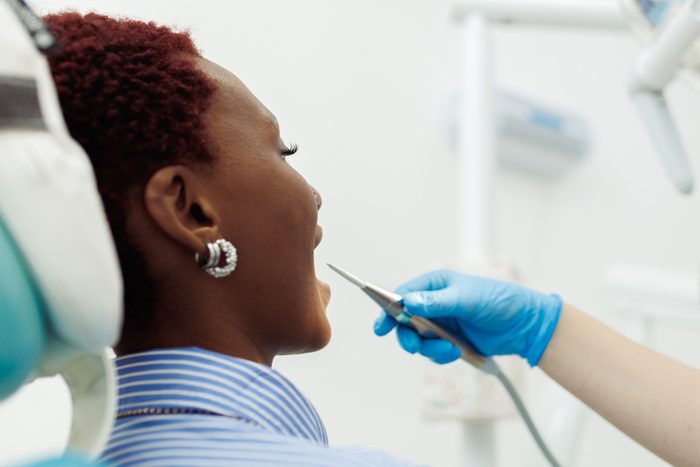
3. Benign soft or hard tissue lesion
Benign soft or hard tissue lesions can develop for various reasons, such as chronic irritation or viral infections. Common types include fibromas—often linked to repeated friction—and papillomas, which can result from the human papillomavirus (HPV).
Symptoms:
- A painless or mildly tender lump
- Little to no change in size over time
Treatment:
Dr. Ross shares that a biopsy is essential to confirm the diagnosis and guide treatment. Depending on the results, your doctor may recommend monitoring the lesion or removing it if necessary.
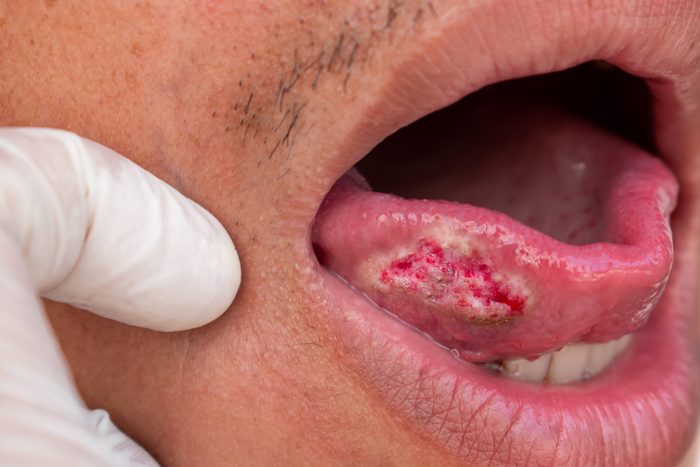
4. Oral cancer
While rare, a bump on the roof of your mouth could be a sign of oral cancer, especially if it lingers or grows. This type of cancer may appear as a persistent lump or sore that doesn’t heal. Major risk factors include tobacco use (whether smoking or chewing), heavy alcohol consumption (especially when combined with tobacco use), HPV infection, advancing age, and poor oral hygiene.
Symptoms:
- A lump or sore that doesn’t heal, with or without pain
- White or red patches inside the mouth
- Difficulty swallowing or speaking
Treatment:
A doctor can diagnose oral cancer with a biopsy. Treatment options vary but may include surgery, radiation therapy, or chemotherapy, depending on the severity and stage of the condition.
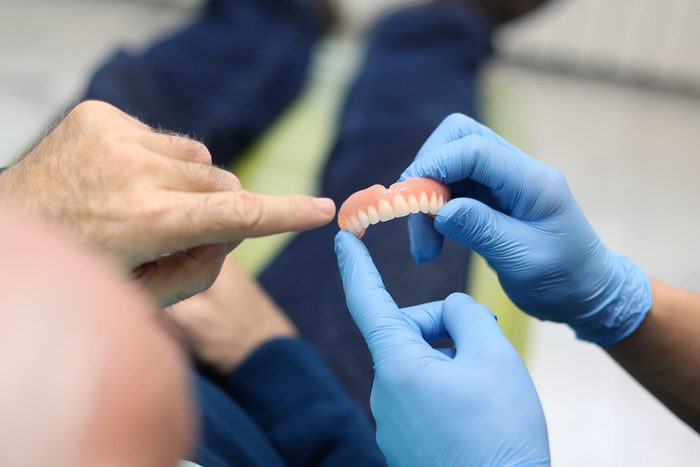
5. Traumatic injury
Accidentally burning your mouth on hot food, scraping it with something sharp, or experiencing irritation from dental appliances like retainers or dentures can lead to painful bumps on the roof of your mouth.
Symptoms:
- Swelling, redness, or blistering
- Pain or sensitivity
- Usually heals within a few days to a week
Treatment:
According to Dr. Ross, most minor mouth injuries heal on their own with time. To promote healing and reduce discomfort:
- Rinse with saltwater to help prevent infection
- Avoid spicy, acidic, or crunchy foods that could cause further irritation
- Apply ice or a cold compress to soothe pain and reduce swelling
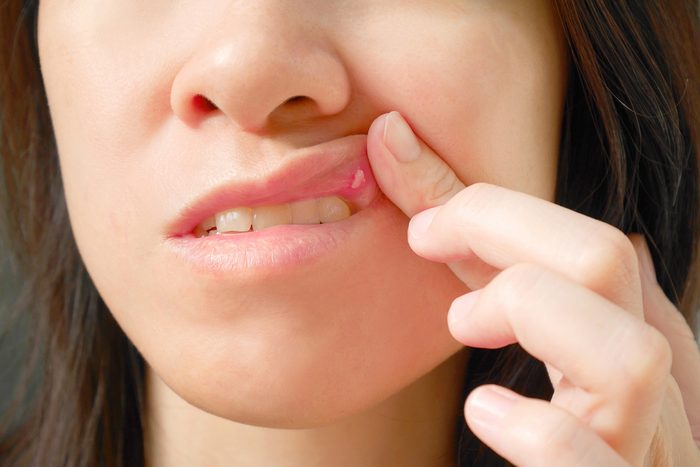
6. Canker sores
If you’ve noticed a small, painful bump inside your mouth, a canker sore could be the culprit. These shallow ulcers can develop due to stress, hormonal changes, a weakened immune system, or irritation from acidic or spicy foods.
Symptoms:
- Round or oval ulcers with a white or yellow center
- Soreness or discomfort, especially when eating or drinking
- Typically heal on their own within one to two weeks
Treatment:
While canker sores usually clear up without intervention, you can ease discomfort with certain home remedies. You can try over-the-counter pain relief gels, saltwater rinses, or antimicrobial mouthwash. Avoiding spicy and acidic foods can also help prevent irritation as the sore heals.

7. Cold sores
Cold sores, also called fever blisters, are small, fluid-filled blisters caused by the herpes simplex virus (HSV-1) and can sometimes appear as a bump in or around the mouth. According to the Cleveland Clinic, once the virus enters the body, it remains dormant in the nervous system but can reactivate due to triggers like stress, illness, or sun exposure.
Symptoms:
- A tingling or burning sensation before the sores appear
- Painful blisters that eventually burst and form a crust
- Sometimes accompanied by fever or swollen lymph nodes
Treatment:
While there’s no cure for HSV-1, antiviral medications such as acyclovir and valacyclovir can help speed up healing and reduce the severity of outbreaks. Over-the-counter creams may also provide relief, and avoiding close contact with others during an active outbreak can help prevent the spread of the virus.
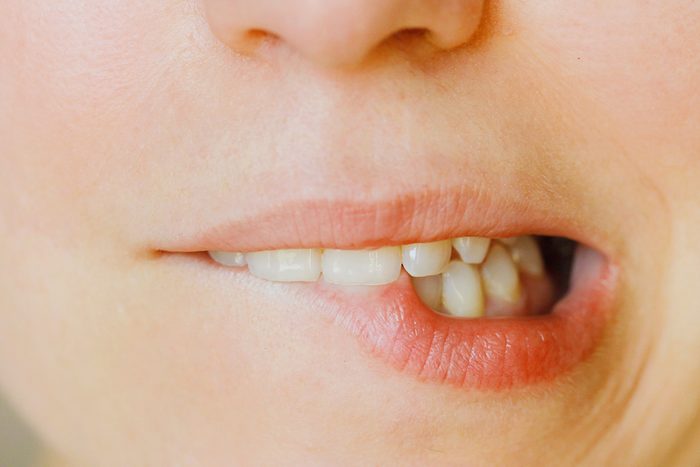
8. Mucoceles
If you’ve discovered a small, fluid-filled bump inside your mouth, it could be a mucocele, which is a harmless cyst caused by a blocked salivary gland. These bumps are especially common in younger individuals and people who frequently bite their lips or cheeks.
Symptoms:
- A soft, round bump, often bluish in color
- Typically painless but may rupture and return
Treatment:
Most mucoceles disappear on their own. However, if one persists or becomes bothersome, a dentist can remove it.

9. Oral thrush (oral candidiasis)
If you notice white bumps or patches inside your mouth, you may have oral thrush, which is a fungal infection caused by an overgrowth of Candida yeast. This condition is more common in people with weakened immune systems, those who use inhaled steroids, or individuals who take antibiotics frequently.
Symptoms:
- White, creamy patches on the tongue, inner cheeks, or roof of the mouth
- Redness or soreness
- Difficulty swallowing
Treatment:
Antifungal medications, such as oral rinses or tablets, can help clear the infection. Maintaining good oral hygiene, including regular brushing and flossing, is also key to prevention.
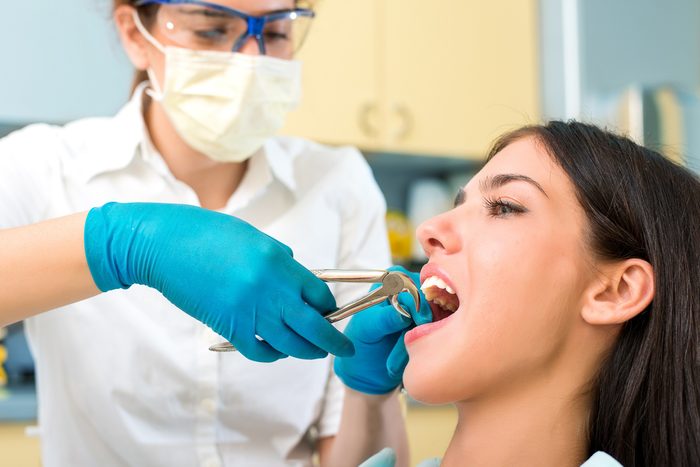
10. Hyperdontia
If you’ve noticed an unusual bump in your mouth, it could be hyperdontia—the medical term for extra teeth, also called supernumerary teeth, according to the Cleveland Clinic. These additional teeth can appear anywhere in the mouth but are most commonly found in the upper jaw, near the incisors or molars. While the exact cause isn’t always clear, certain factors may increase the likelihood of developing extra teeth, including genetics and certain conditions such as Gardner syndrome or cleidocranial dysplasia. Research also suggests that males are more commonly affected than females.
Symptoms:
- A noticeable bump or extra tooth in the mouth
- Crowding or misalignment of teeth
- Difficulty chewing or speaking
- Pain or discomfort, especially if the extra teeth affect bite alignment
Treatment:
If the extra teeth aren’t causing problems, a dentist may simply keep an eye on them. However, if hyperdontia leads to crowding, pain, or problems with chewing or speech, removal may be necessary. Orthodontic treatments, such as braces or aligners, can help correct spacing and alignment issues. In rare cases, surgical intervention is needed when extra teeth are deeply embedded in the gums or jawbone.
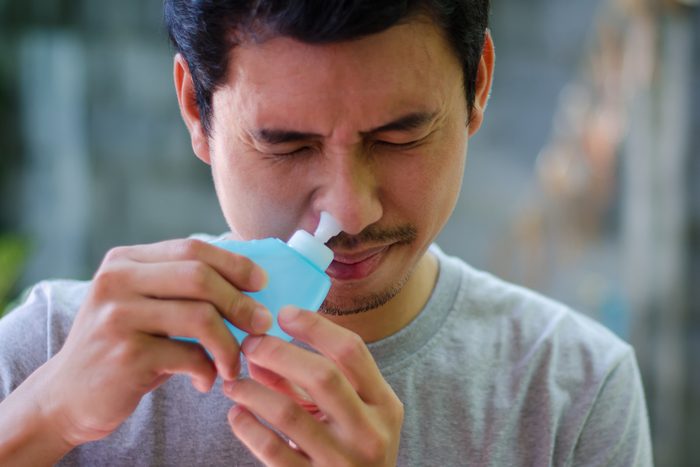
11. Sinus infections
A swollen bump in your mouth, especially near the back of the mouth, could be linked to a sinus infection. When your sinus cavities become inflamed due to infection, the pressure could potentially cause swelling that extends into your mouth.
Symptoms:
- Facial pain and pressure
- Nasal congestion
- Postnasal drip
Treatment:
Most sinus infections clear up on their own, but decongestants and saline nasal rinses can help ease discomfort. If a bacterial infection is suspected, a doctor will prescribe antibiotics.
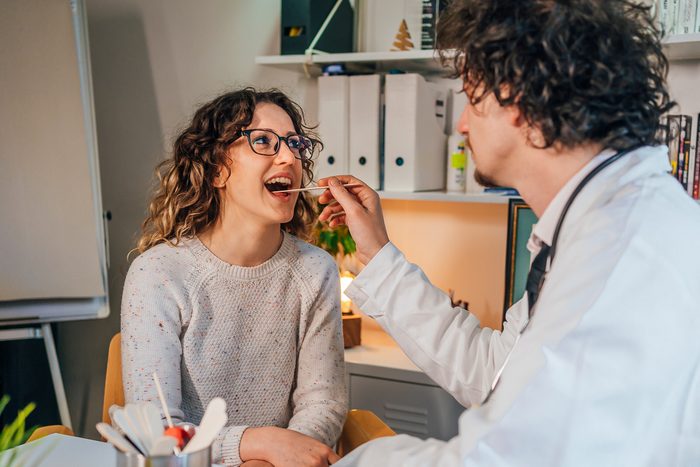
When to see a doctor
Dr. Ross advises seeing a doctor or dentist if you notice a bump in your mouth that changes in size, color, or location, becomes painful, or persists for more than two weeks.
Diagnosis typically involves a visual exam and X-rays, and in some cases, a CT scan may be needed. Additional tests can help determine whether a tooth’s nerve is still alive—for instance, a dentist might place a cold cotton swab on the tooth to see if you can feel the temperature change.
Because some bumps may form in hard-to-see areas, regular dental checkups are essential. “Seeing your dentist at least twice a year is important to ensure that the bump isn’t concerning,” she emphasizes.
For daily wellness updates, subscribe to The Healthy by Reader’s Digest newsletter and follow The Healthy on Facebook and Instagram. Keep reading:



















